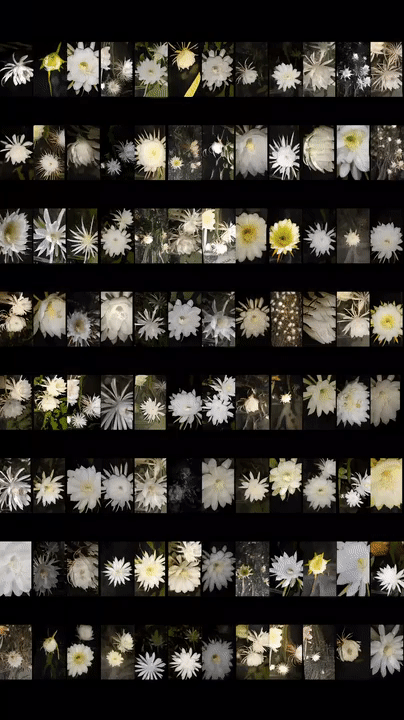
Anna Ridler
Anno oxypetalum
Lot Closed
April 25, 04:28 PM GMT
Estimate
80,000 - 120,000 USD
Lot Details
Description
Anna Ridler
b. 1985
Anno oxypetalum
non-fungible Token ERC-721
contract address: 0xa2eB13f812135A641E3678bD054D8D89735f11Ac
token ID: 2
metadata: MP4
Minted in 2022, ed. 1/1.
The Artist
Anna Ridler holds an MA in Information Experience Design from the Royal College of Art and a BA in English Literature and Language from Oxford University. Her work has been exhibited at cultural institutions worldwide including the Victoria and Albert Museum, London, UK, the Barbican Centre, London, UK, Centre Pompidou, Paris. She was a European Union EMAP fellow and the winner of the 2018-2019 DARE Art Prize. Ridler has received commissions from Salford University, the Photographers Gallery, Opera North, and Impakt Festival. She was listed as one of the nine “pioneering artists” exploring AI’s creative potential by Artnet.
Ridler’s piece Anno oxypetalum (literally “the year of the pointed petals”), references the night-blooming cactuses that are featured and functions as a kind of clock, measuring the amount of light across the year. It is part of Ridler’s broader exploration of plants’ chrono-biological clocks, by which they bloom and close at fixed times of day. Plants behave this way regardless of external stimuli. A night-blooming cactus, for example, will only bloom at night, even if it is exposed to darkness during the daytime and light at night; a morning glory moved into permanent darkness will still flower in the mornings. The work is inspired by Carl Linnaeus’ idea of a horologium florae or floral clock, proposed in his Philosophia Botanica in 1751 after observing the phenomenon of certain flowers opening and closing at set times of the day, and also harkens back in an earlier, medieval way of constructing time in temporal hours when time was delineated according to the amount of daylight present.
Here each flower represents 10 minutes, each second approximately 2 days. Across the piece the flowers fade in and out as the light ebbs and flows with the seasons. It is accurate for London starting at the solstice 2021, the day her daughter was born. A third level of time in the piece occurs when it changes wallets: it will start at a new point in the video.
Technology and science are reliant on standardized accurate time keeping. Our world is built upon it. Modern advancements in commercial timekeeping evolved from natural and organic cycles (sun, moon, seasons) to form ever smaller and more precise units. There is a tension, therefore, between the computer’s ability to keep time to the microsecond and creating something that visually obscures this accuracy and portrays time more loosely and, at a first glance, illegibly.
The tension is further heightened by placing the work in an auction that is explicitly about generative art. In many ways nature is the original generative artist, with each iteration changing. Although deeply inspired by generative artists, Ridler is also influenced by the land and environmental artists of the 60s and 70s, whose works were meticulously planned out in advance, but where the natural elements - water, wind, light - also act upon these plans to create the final pieces. In Ridler’s case, the natural or biological elements are the neural nets that she uses to create.
You May Also Like










